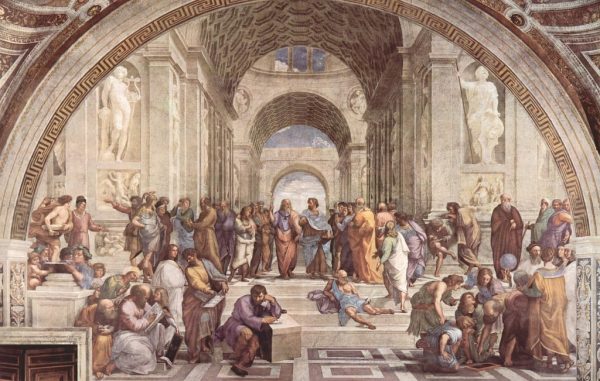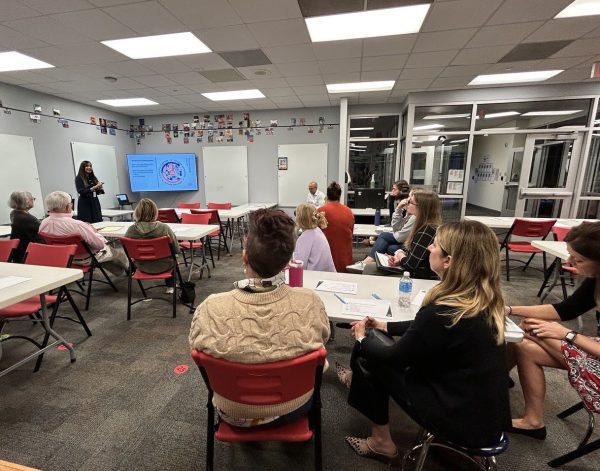CHS Goes Green
In 2013, Clayton High School achieved the Silver Leadership in Energy and Environmental Design (LEED) Award for its outstanding leadership in energy efficiency. This is the second highest of four different standards of environmental friendliness: starting from the bottom, certified, silver, gold and platinum. The levels are separated by a 10 point difference which buildings receive not only for their technological efficiencies, but also construction done on the building, the quality of materials and the use of the building itself.
In many schools throughout the country, solar panels have become a common utility for recycling energy. Funding for public entities has made this possible for many buildings. In 2013, CHS installed solar panels in order to save money and cut back on the need to obtain energy throughout outside sources.
Tim Wonish, the Director of Facilities for the Clayton School District, oversees the day-to-day operations of building management. He worked directly with Ameren UE to achieve the installation.
“The inverters, [located on the back of CHS, toward the dumpsters], bring DC (direct current) and invert it into AC (alternating current), which goes back into the distribution system for the building,” said Wonish. “We save about $2,500 to $5,000 per year for every panel. [Since] CHS has three solar panel arrays, about 8 to 10 thousand dollars [go back into our pocket], and that money can be used for things like fixing the concrete or finishing up paint, etc.”
The total amount of savings depends on the type of weather. If there is not a lot of sunlight, CHS simply cannot save as much energy. The total Facility Service Budget for maintaining all the buildings and grounds for the entire School District is approximately $3.2 million, including utility cost for all buildings; therefore, solar panels are useful in saving money when considering that the given amount is for the entire district, not just CHS. And although saving money is a big incentive, CHS strives to set an example for other schools and businesses.
“[Another purpose to energy efficiency in CHS is] to model behaviors for our students and our community, so we have an opportunity where we can reduce our carbon emissions. It’s good for the planet and to model that certain behavior,” says CHS Principal Dan Gutchewsky.
One unique way CHS has shown this environmental awareness is through its installation of the greenhouse. The greenhouse itself would not be considered a system that helps to reduce energy given that energy input is needed to run it, but the technologies inside the greenhouse are modeled by the LEED certification requirements, meaning they cut back on the amount of energy that could be used.
“The greenhouse was installed to teach students about plant research. Without it, students only have just a few weeks for their studies. The greenhouse manages variables such as light and temperature needed to sustain life,” Nathan Peck, K-12 science curriculum coordinator for the School District of Clayton said.
But CHS has more uses for the greenhouse than just for the high school’s studies. It provides the community with several plant research opportunities.
“We partner with the Danforth Plant Center where we run experiments for them and report the results. In the spring, if we have plants and we’re done looking at the academic side to them, we transport them over to the elementary schools [where] they have gardens. They can plant their own (which only just start to sprout), but we’ll supply the big plant. Because they don’t have time since they don’t have a greenhouse, they can see all the stages of plant life in a relatively short unit,” Peck said.
CHS has also been trying to cut back on carbon emissions through their lighting, heating and cooling systems. When the Center of Clayton was built back in 2000, it was equipped with the newest and most energy efficient lighting technology. The T8 lamps were the best the market had to offer. But in such a dynamic field, technology never seems to stay the best for long.
“And when you think you got the best, new technologies like LED lights come out. So now you think I got the T8 in here, that was the best, but no. Now they even have better lights. So now we go back through areas where we think we had nice, efficient light, but we can make it even better,” Wonish said.
A few years later, the LED lights, which are even more efficient bulbs, were released. The LED bulbs are much brighter, and they do not need time to warm up or cool down in contrast to the previously installed lighting such as gym fixtures. Furthermore, although the initial cost might be a little higher, it saves money in the long run by using less power and having a longer lifetime.
But like many other buildings, CHS is constantly pushing to be a model for efficiency. Wonish’s current plans are to upgrade the gymnasium lights to LED bulbs.
“LED lights would reduce the energy costs up to 75%, and the lights can instantly come on and off, plus you get better lighting.” says Wonish. “The other [thing] is that they only draw one-tenth of the electricity of the metal halide fixtures.”
Another upgrade CHS recently received is its HVAC (heat, ventilation and air conditioning) system. A new chiller and five boilers were put in place. The steam heat has now been replaced by hot water heat in order to conserve energy and improve indoor comfort.
With Building Management, a software program, Wonish can control all the temperature, light and ventilation settings from his desk. It makes it much more easy to be energy efficient.
“When nobody is in the building you don’t need to be 72°. You can get by 78° or 80°. You don’t want to go much higher otherwise it starts causing too much humidity in the building, which can affect the interior finishes. However, by doing that you save money and energy,” says Wonish.
As miniscule as this may seem to do, the task has much more value when combined with other energy efficient procedures. When we cut back the amount of energy we use, the amount of money and energy we save starts to accumulate rapidly. Thousands of dollars are saved, and in addition, CHS is setting a standard for environmental leadership. If every school did likewise, the amount of conserved energy would be astonishing, and this would encourage other companies to follow the trend. This just shows that a little bit of green can go a long way.
A $50 or more donation includes a subscription to the Clayton High School Globe 2024-2025 print news magazine.
We will mail a copy of our issues to the recipients of your choice.
Your donation helps preserve the tangible experience of print journalism, ensuring that student voices reach our community and that student democracy thrives.






